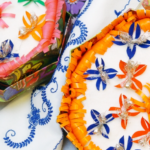Get to know Aveiro through the tiles!
These small pieces of pottery tell the story of the city.
Discover your relationship with the sea and other cities. It is worth taking a tour of the city, looking at the tiles and realizing the influence of various cultures on the city and the country! Venture through the streets and canals of Aveiro and fall in love with what is known as the Venice of Portugal.

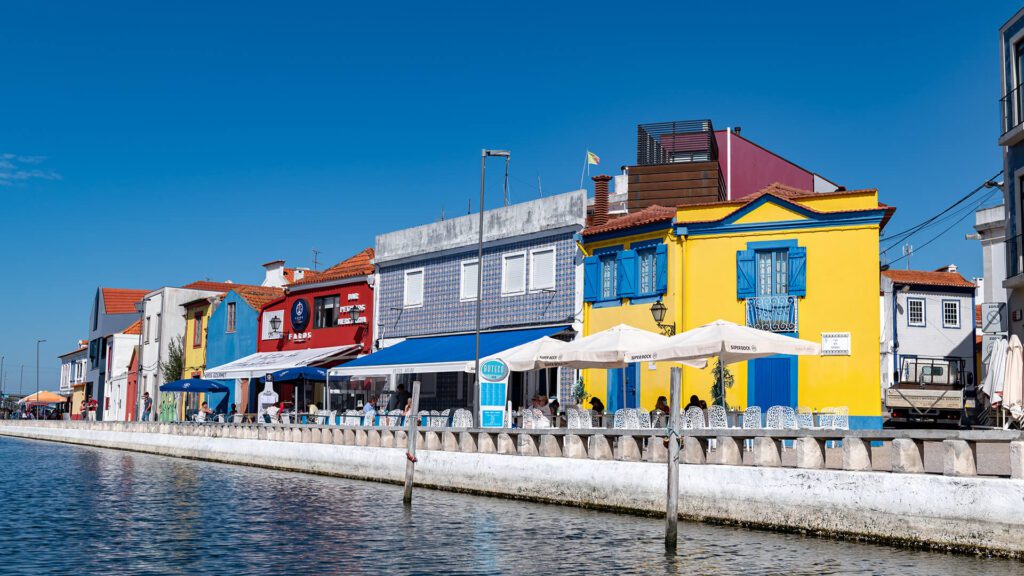
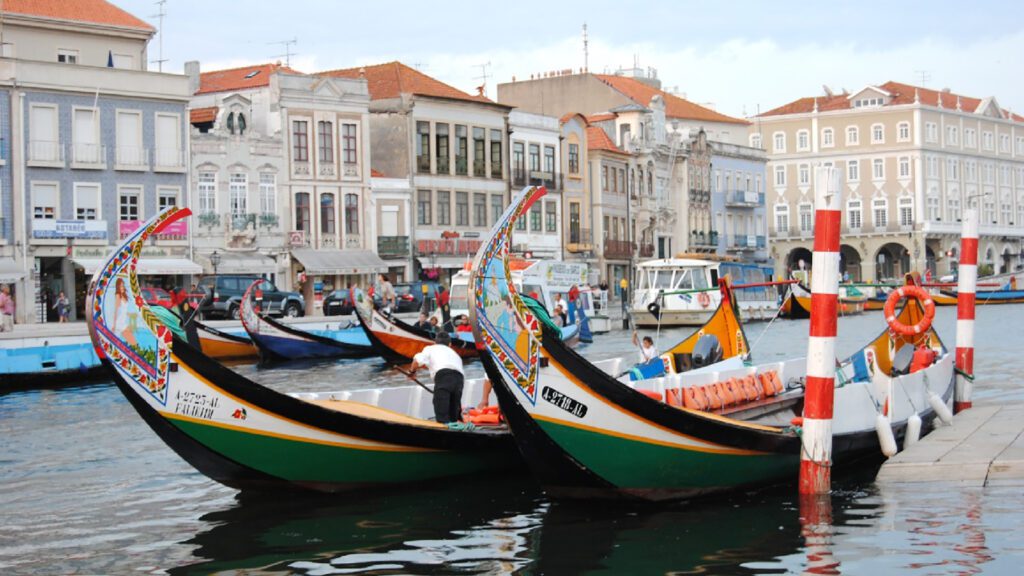
x
01. The Train Station
Whether you arrive in Aveiro by train or other means of transportation, the Train Station is a stop not to be missed. Enjoy one of the most beautiful examples of Portuguese tiles, dating from 1916. The authors, Francisco Pereira and Licínio Pinto, used tiles from Fábrica da Fonte Nova, in Aveiro, which has won several ceramic awards throughout its existence. These real postcards depict the traditional life of the region, including fishing and salt harvesting, the hallmarks of which can be found all over the city.
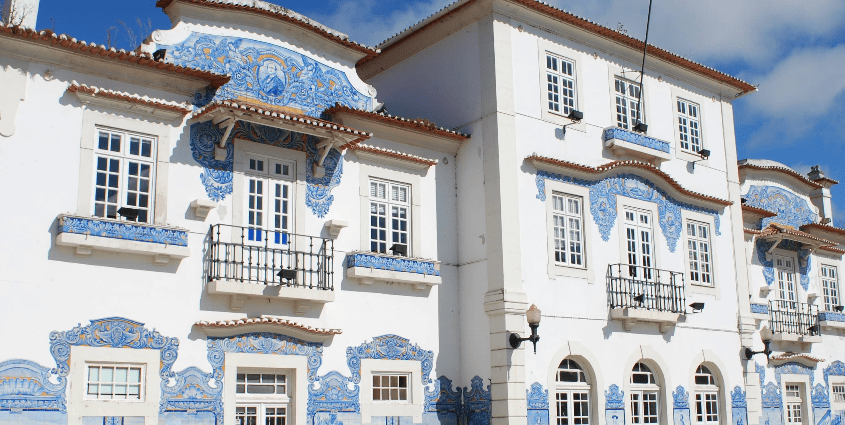
x
02. The Cathedral of Aveiro
The pottery industry began in Aveiro in the 16th century. In the vicinity of the current Cathedral, there was the “Bairro dos Oleiros”, occupied exclusively by their families. The neighborhood expanded, reaching the entire current Avenida 25 de Abril, which until 1978/79 was called “Travessa da Olaria”. At the end of the avenue was the Church of S. Domingos, where the potters performed their ceremonies and prayers.
Nowadays, the church is also the Cathedral of Aveiro, and has been classified as a Property of Public Interest since 1996. Be sure to take advantage of your visit to the city to enter this Cathedral and appreciate the tiles of the century. XVIII in the free spaces of the walls. On the right a panorama of the city of Osma, Spain, where St. Dominic de Gusmao was born. On the left, the city of Bologna, Italy, with its Benedictine convent of Santa Maria del Monte, where St. Dominic de Gusmão died.
x
03. Museum of Aveiro/Santa Joana and the Tomb of the Princess
A few steps from the Cathedral is the Aveiro Museum, with a fantastic collection of paintings, sculptures, carvings, jewelery and, of course, tiles. This museum is housed in the former Convent of Jesus in 1911, the year after which the monastery was closed and its incredible church classified as a national monument. The Church of Jesus is an outstanding example of Baroque decoration, with sumptuous gilded woodwork and Portuguese tiles.
In addition to several tile panels inside the museum, not to be missed is the low choir, with the tomb of Saint Joan the Princess, to whom the prestige of the convent is associated. A masterpiece of Baroque art, in multicolored marble with sculptural elements influenced by Italian taste, designed by the royal architect João Antunes.
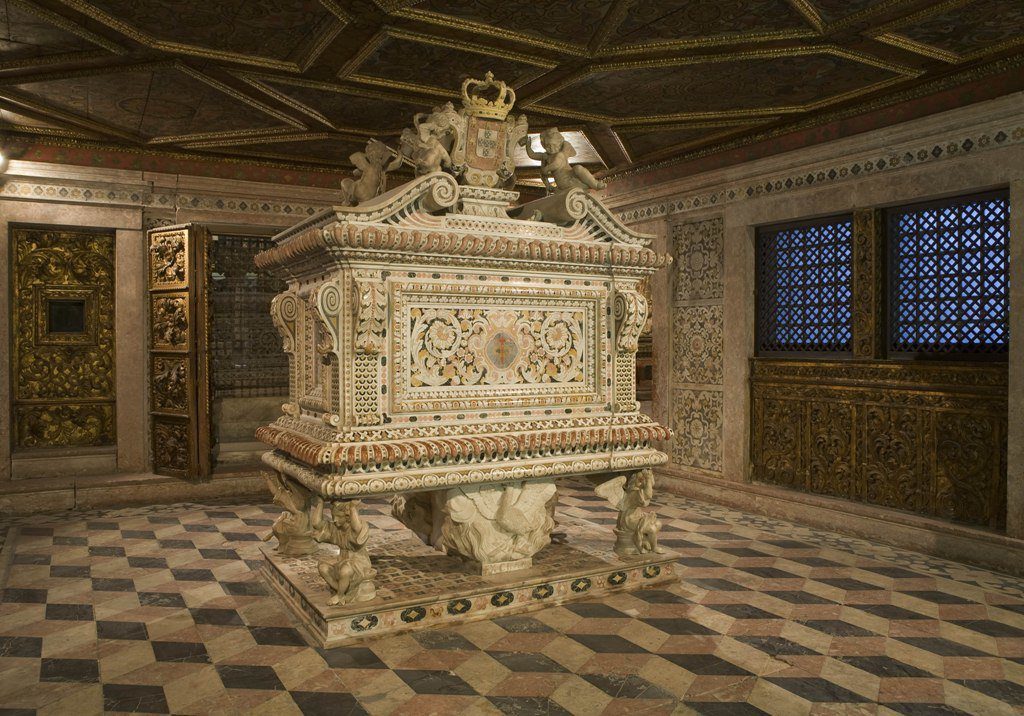
x
04. The House of Santa Zita
It is impossible to pass by Rua dos Combatentes da Grande Guerra and remain indifferent to the fascinating facade of what is now known as Casa de Santa Zita, the Palacete Visconde da Granja. A property of neoclassical influence, dating from the mid-1800s, whose façade was covered with tiles at the turn of the century. Panels of the Fonte Nova Factory, signed by Lucínio Pinto.
The trend of using tiles on the outside is an import from Brazil – in Portugal tiles were only used in interiors. The strong presence of panels in civil architecture comes from the return of emigrants (the “Brazilians”), who used them as a symbol of status, power and ostentation of wealth. They made the art economically viable and profitable, leading to the creation of the first tile industries in Aveiro and northern Portugal.
x
05. The Church of Misericórdia de Aveiro
The Misericórdia de Aveiro Church, a Property of Public Interest since 1974, is the second building whose façade was covered with tiles, after the Casa dos Arcos (below). Outside, the pediment covered with blue and white stamped tiles from 1867 enhances the beauty of the church’s portal. Inside, the walls of the church are covered with 17th-century polychrome tiles in two different carpets laid during the third decade of the 17th century. The chancel was covered with beautiful and rare Portuguese tiles.
x
06. João Mendonça Street and the Art Nouveau buildings
Along Rua João Mendonça, where tourism has been intensifying in recent years, we can see the manifestation of Art Nouveau in the city of Aveiro, in the form of tiles, which happened mainly at the beginning of the 20th century. We suggest that you don’t just take in the exterior; step inside some of these buildings and discover what they have to offer:
- Municipal Tourist Office: ask for information and some tips from those who know the city like no one else, at this tourist information point.
- Casa dos Ovos-moles “A Barrica”: one of the most traditional houses of homemade ovos-moles, the traditional sweet of Aveiro par excellence. (Tip: if you are looking for the oldest Ovos Moles house in Aveiro, look for Confeitaria Peixinho, just below the Misericórdia Church. Open since 1856 and recently renovated, you can take it with you or taste the delicacy right there).
- Casa/Museu de Arte Nova: take a leap to the small Museu de Arte Nova and observe the colorful tile panels, by the Aveiro artist Licínio Pinto and produced by Fábrica da Fonte Nova. Also on the first floor, we find the Tea House, with a very diverse menu, with teas from various parts of the world.
- Building of the (Old) Agricultural Cooperative / Casa da Arte Nova: civil architecture building and Property of Public Interest, since 1996. The warm colors used in its polychromatic tile panels from Fábrica da Fonte Nova draw attention to this example of Aveiro architecture. The use of wrought iron, the smooth lines, the contours of the frames are some of the hallmarks of Art Nouveau that give it a peculiar light.
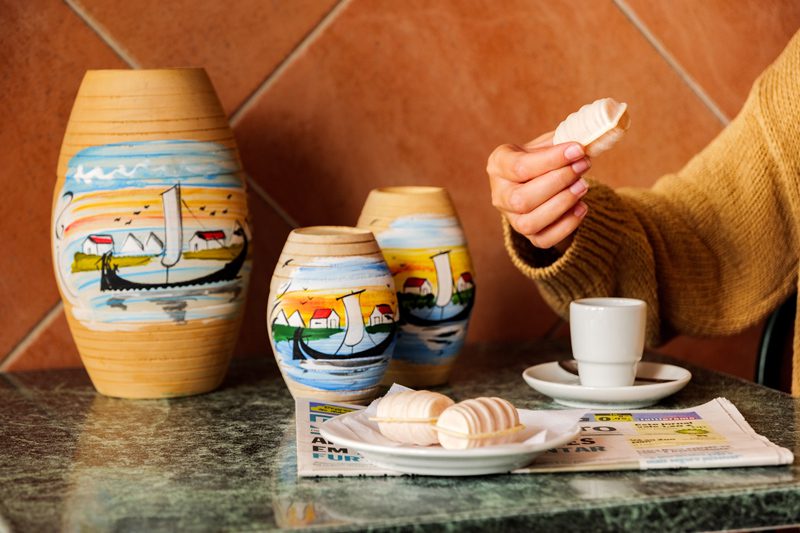
x
07. The House of Arches
Now, the first building covered with tiles, in Aveiro, in 1857: the building of the former Captaincy of the Port of Aveiro, also called “Casa dos Arcos”, located over the Ria, where there used to be a tide mill. Two small panels on the façade currently show motifs linked to the sea and reveal the city’s maritime tradition. Today the picturesque building is a public building, belonging to the City Council, the place where the Municipal Assembly operates.
x
08. The Ria de Aveiro
The Ria, as a navigable channel and link to the outside world, was one of the key success factors for the tile industry, since it allowed its transportation and export to various parts of the world. Enjoy a ride on the typical “Moliceiro” boats and learn a little more about the history of the city, including its Beira-Mar neighborhood, where the city expanded.

x
09. Cultural and Congress Center
Over time, in the face of great demand, several ceramic and tile factories have sprung up, which have disappeared over time. The industries were located at various points, including the Fonte Nova Canal, where today we can still see their marks. Enjoy one of the most emblematic elements of the city, the current Cultural and Congress Center of Aveiro, former building of Fábrica Jerónimo Pereira, one of the most important industries throughout the history of Aveiro.
The city of Aveiro, known for its canals and moliceiros boats, was associated with ceramics from a very young age, due to its rich clay soil. Take advantage of your visit to Aveiro to visit these places and observe these fantastic examples of tiles and marks of the city’s tile tradition.
x


